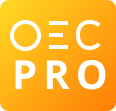Bangladesh-Switzerland Trade: In 2022, Bangladesh exported $1.12B to Switzerland. The main products that Bangladesh exported to Switzerland were Knit Sweaters ($222M), Non-Knit Men's Suits ($196M), and Knit T-shirts ($107M). Over the past 5 years the exports of Bangladesh to Switzerland have increased at an annualized rate of 17.1%, from $508M in 2017 to $1.12B in 2022.
In 2022, Bangladesh did not export any services to Switzerland.
Switzerland-Bangladesh Trade: In 2022, Switzerland exported $122M to Bangladesh. The main products that Switzerland exported to Bangladesh were Packaged Medicaments ($10.5M), Knitting Machine Accessories ($9.6M), and Vaccines, blood, antisera, toxins and cultures ($9.31M). Over the past 5 years the exports of Switzerland to Bangladesh have decreased at an annualized rate of 5.87%, from $165M in 2017 to $122M in 2022.
In 2022, Switzerland did not export any services to Bangladesh.
Comparison: In 2022, Bangladesh ranked 101 in the Economic Complexity Index (ECI -0.82), and 52 in total exports ($64.2B). That same year, Switzerland ranked 2 in the Economic Complexity Index (ECI 1.97), and 17 in total exports ($402B).

